Tech
Topographies that talk
Published
2 years agoon
By
Drew Simpson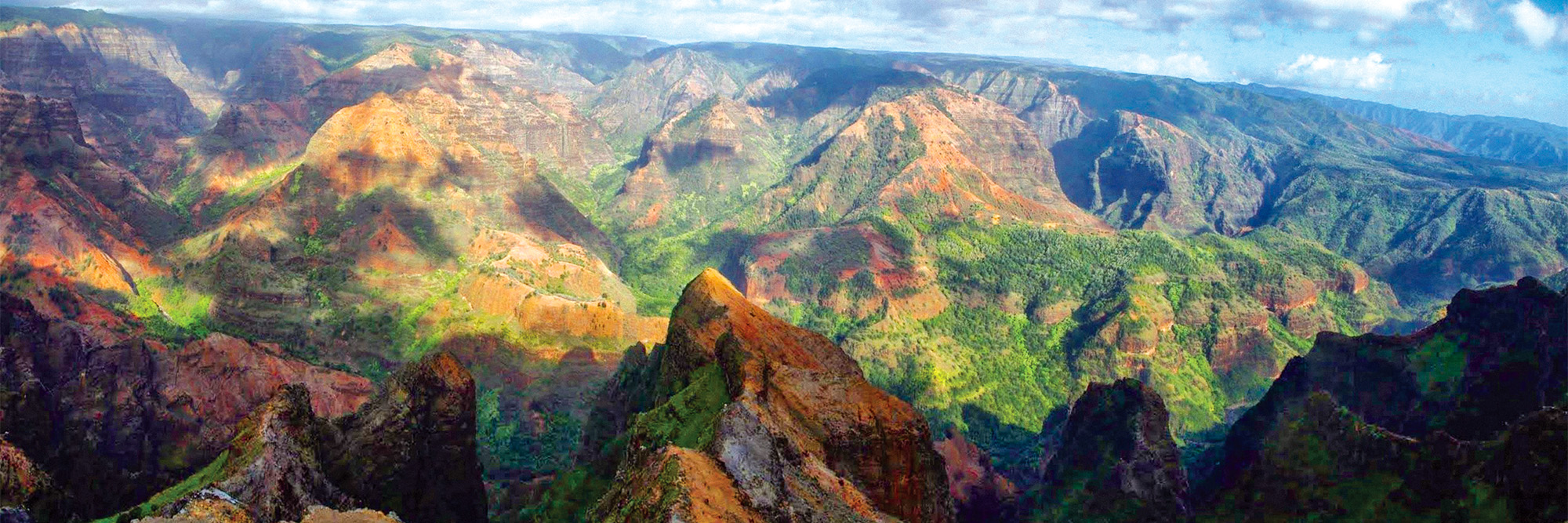
Perron’s research group at MIT discovered that a competition between two erosional mechanisms—the gradual movement of soil down slopes and the carving of valleys by rivers as they flow through a landscape over eons—creates these identifiable patterns. In a 2012 paper in Nature, they described the “erosional mechanics” at work, presenting a mathematical model that predicts both the pattern of river branches and their size—down to the smallest tributaries—based on a landscape’s climate and the strength of the rock or soil the waters are cutting into.
That willingness to get to the bottom of big questions, applying tools from multiple disciplines to deduce the history of Earth’s landscapes and predict how they might respond to further environmental changes, earned Perron a 2021 MacArthur Foundation fellowship, better known as a “genius grant.”
Many researchers see Perron as “the leading architect of a renaissance in geomorphology, transitioning the field from emphasis on qualitative descriptions toward physics-based modeling,” says Robert van der Hilst, Schlumberger Professor of Earth and Planetary Sciences and head of EAPS. And that renaissance is much needed. “Some of the most common patterns in landscape evolution, and the underlying processes that control them, have long remained stubbornly enigmatic,” he says.
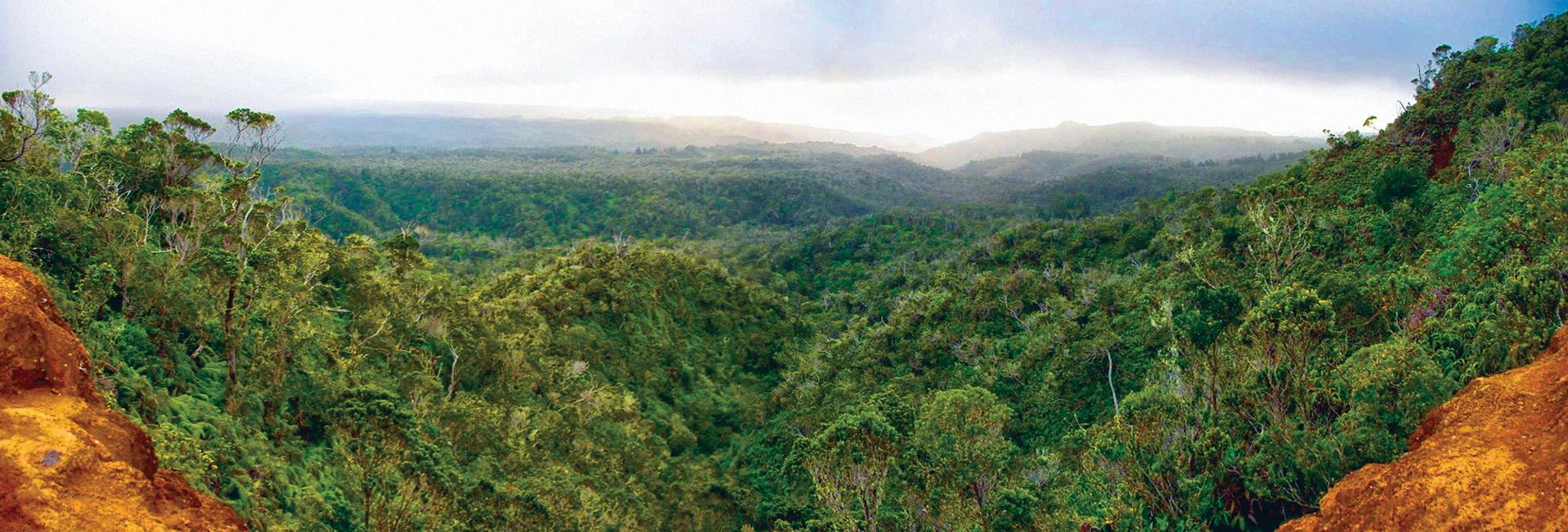
TAYLOR PERRON
That’s because Earth’s dynamic and complex landscapes are not static masses but shifting environments that emerge as multiple forces, both natural and human-directed, at work upon the planet’s varied surfaces.
To articulate the complexities of Earth’s physical processes and figure out how they shape the landscape, Perron and his team analyze a lot of data—from field observations, remote sensing instruments, high-resolution topographic surveys, and space missions. Then they use that data to develop and refine sophisticated quantitative models and computer simulations of landscape evolution. Perron also embraces interdisciplinary collaborations to add new detail and nuance to his research.
“If you have to piece together what happened to the Earth—or even to another planet—or try to forecast what might happen in the future,” he says, “it is to your advantage to draw on as many different kinds of evidence as you can.”
Understanding landscapes past is essential to navigating our precarious present, as climate change imperils both natural and man-made environments.
He has also found that a close analysis of Earth’s landscapes can deepen our understanding of the new worlds opened up by interplanetary exploration. The cold deserts of Mars and the methane atmosphere of Saturn’s moon Titan may be distant from our own world, but Perron and his team can discern dynamics similar to those on Earth, as well as key differences. Knowing the mechanics of our own planet’s rivers, for instance, suggests that the essential role of plate tectonics in shaping Earth’s landscapes had not been replicated on Mars or Titan.
Understanding landscapes past is essential to navigating our precarious present as climate change imperils both natural and man-made environments. It also gives us tools to model and perhaps even shape our uncertain future as well.
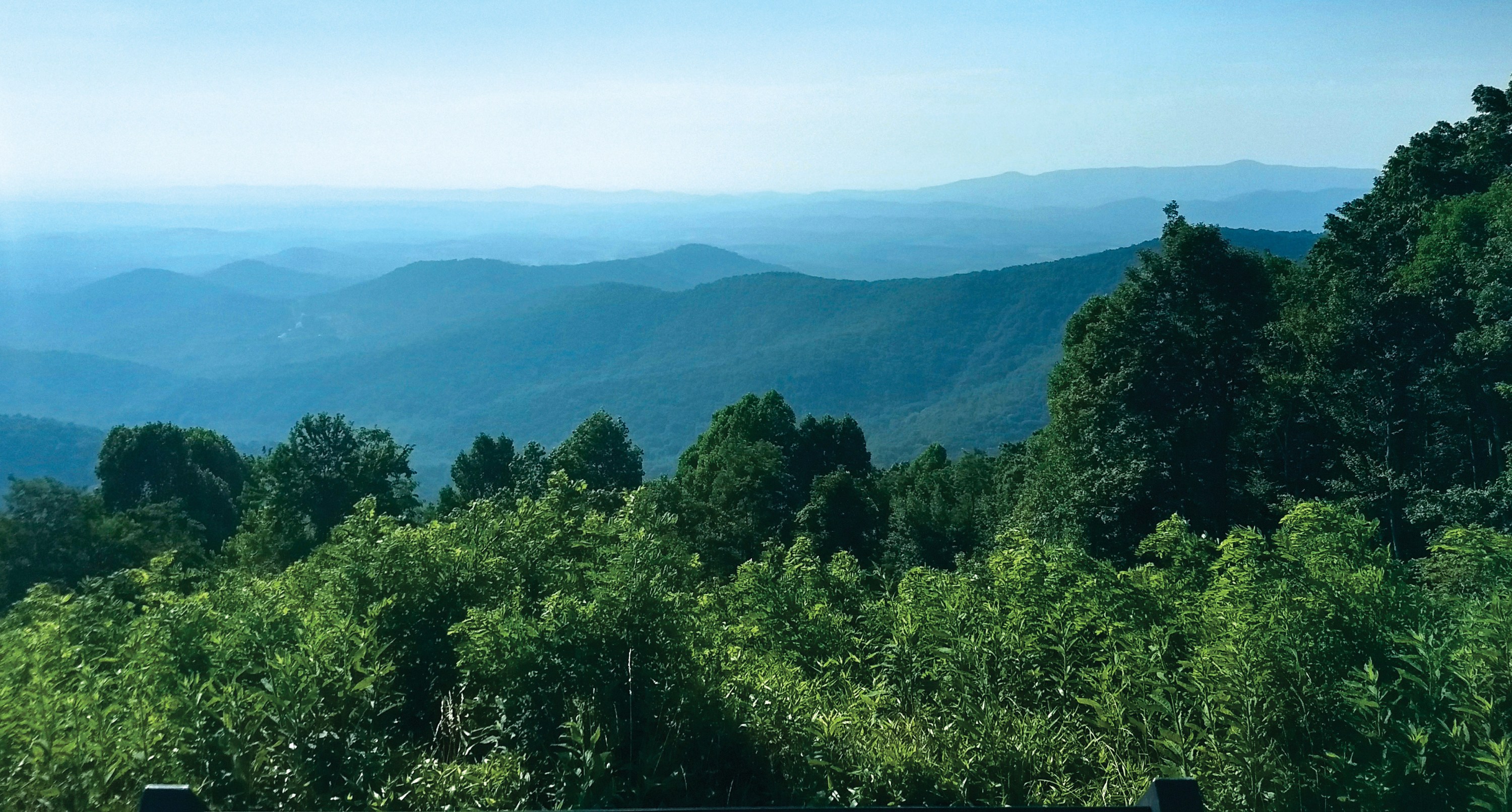
TAYLOR PERRON
“Many of the landscapes we study have formed over thousands or millions of years,” Perron says. “Our work to measure how climate shapes landscapes helps give us an idea of what to expect as we continue to change Earth’s climate.
“Looking into the past, even over pretty long periods into the past,” he continues, “is really important and relevant to what’s happening now and to what might happen in the near future—even over human time scales.”
A river runs through it
Perron’s work explores landscapes from the Amazon to Mars, but his journey began in New England. Even as a child in rural Vermont, he was curious about the whodunits glimpsed in the visible landscape.
“One of the first times I remember thinking about science and the landscape in the same context,” he says, “was learning that the mountains that I could see when I was on my way to school had been underneath hundreds of meters of ice at some point.”
Perron was left with a “sense that there was this enormous part of Earth’s history that wasn’t directly accessible to us,” he says. “You’re going to have to piece it together from whatever nature left around for you.”
He delved into Earth and planetary sciences and archaeology as an undergrad at Harvard University, spent a year at the US Geological Survey, and got a PhD in Earth and planetary sciences at the University of California, Berkeley in 2006. After postdoctoral studies at Harvard, Perron joined the faculty at MIT, where he’s been piecing together Earth’s history since 2009.
“We’re mostly interested in how rivers, mountains, and other landforms change over time,” says Perron of his research group’s focus. “That is the common thread—especially rivers—that runs through most, if not all, of our research.”
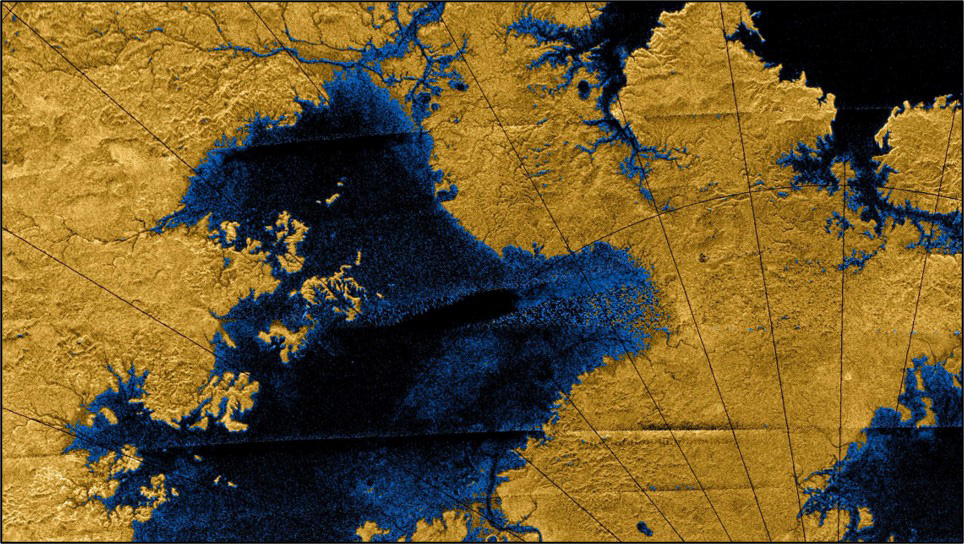
NASA/JPL-CALTECH/ASI/USG
Perron’s team has uncovered how bedrock rivers shape landscapes—and how the landscape’s evolution can reshape the networks rivers create. These rivers that flow over beds of rock, he says, drive topographical changes by creating steep-sloped valleys where surface material must fall downward: “Think about these networks of rivers, these spindly, branching treelike networks, as carving down into the rock and just dragging the rest of the surface along with them.”
His research has expanded our understanding of the formation and substance of the so-called “critical zone”—a thin layer a few feet below Earth’s surface where rocks break down to form soil.
To study how the complex variables of climate shape the landscape, his group is exploring such things as how extreme rainfall might affect the location, frequency, and severity of landslides, or how wave climate (wave intensity averaged over a year) affects the rate of coastal retreat or erosion. By looking at the varying wave climates on the Hawaiian islands, Perron and colleagues have measured how much faster a coast with larger waves erodes than a coast with smaller waves does.
Nature itself has conducted vast and useful long-term experiments that can shed light on landscape evolution. “Complicated systems have so many different factors that can change and influence them,” he says. “We like to try to identify natural experiments. And that can include natural experiments in climate, where we try to find landscapes where nature has controlled for a number of key factors and changed one that is especially important, and we can study that.” For example, again looking at Hawaii, the side of the islands exposed to the trade winds is rainier and wetter, allowing researchers to gauge how rainfall influences river erosion.
Lunar landscapes and lost lakes
Perron’s work on the role of Earth’s rivers has also laid a foundation for his research on planetary landscapes. The same tools that allow us to read Earth’s history backward through its landscapes also help us understand more about the fate of now-vanished lakes and rivers on Mars, or how the methane rivers and lakes of Saturn’s moon Titan work.
“The uptick in planetary exploration starting around 25 years ago has had a huge impact on my work,” he says. “I realized as a graduate student that many of the things I was learning as an Earth scientist could be applied to [other] planets.” His decision to expand his research beyond Earth was inspired in part by the global digital topographic map of Mars developed by MIT’s vice president for research Maria Zuber in the late 1990s, as well as the discovery of Titan’s active rivers.
“Seeing Earthlike landforms on other planets is also a great opportunity to analyze experiments that nature has done for us.”
“It’s incredible how much we humans have learned about the solar system in such a short time,” he says. He also realized that studying other planets could inform his research on Earth. “Seeing Earthlike landforms on other planets is also a great opportunity to analyze experiments that nature has done for us,” he says.
Obviously, scientists cannot do fieldwork on Mars or Titan. (“For now,” quips Perron.) “If we wanted to know how much water and sediment a river on Earth carries, we’d measure the size of the sediment on the riverbed and survey a cross-section of the river channel,” he says. “If we want to know how fast a mountain range is rising up or eroding away on Earth, we go collect samples there and bring them back to the lab. We can’t do any of those things on Mars or Titan. So we have to get creative.”
Perron and his team blend information from planetary missions with their work on Earth’s surfaces to paint a picture of faraway landscapes. He says, “We know it rains methane on Titan, but we can’t see it happening—so my group estimated how hard it rains based on measurements of river networks in pictures from the Cassini-Huygens spacecraft mission. We also came up with a way to calculate how much water an ancient Martian river carried, or how much methane a modern Titan river carries, using only dimensions we can measure from orbit.”
But Perron concedes that a lack of field samples means some questions must remain open for now: “How long did it take for Titan’s landscapes to form? Have they been active for billions of years? We don’t know yet.”
Getting granular
Perron sees collaboration with researchers in other disciplines as essential to answering foundational questions and expanding the boundaries of his research.
“We’ve worked with colleagues at MIT who study everything from the carbon cycle to the physics of granular materials,” he says. “We’ve worked with colleagues at other institutions who study the genetics of fish, or the archeology of the ancient Amazon.”
One important example is his work with mechanical engineering professor Ken Kamrin, who specializes in the mechanics and physics of granular materials, to study the movement of gravel and sand in rivers (known as sediment transport) that leads to erosion.
“People have been studying how rivers move sediment for many years,” says Perron. “Ken has a fresh take on rivers and has opened my eyes to things that have been overlooked by people in my own field.”
Their collaboration focuses particularly on how the size and shape of sediment grains affect sediment transport. “This is an interesting problem from the geophysical standpoint,” Kamrin says, “because more-sensitive modeling tools will lead to better predictions of bed erosion.”
“Granular media is a notoriously difficult material to model,” he adds, but this research may even “lead to breakthroughs in modeling granular flow that apply beyond the riverbed context.”
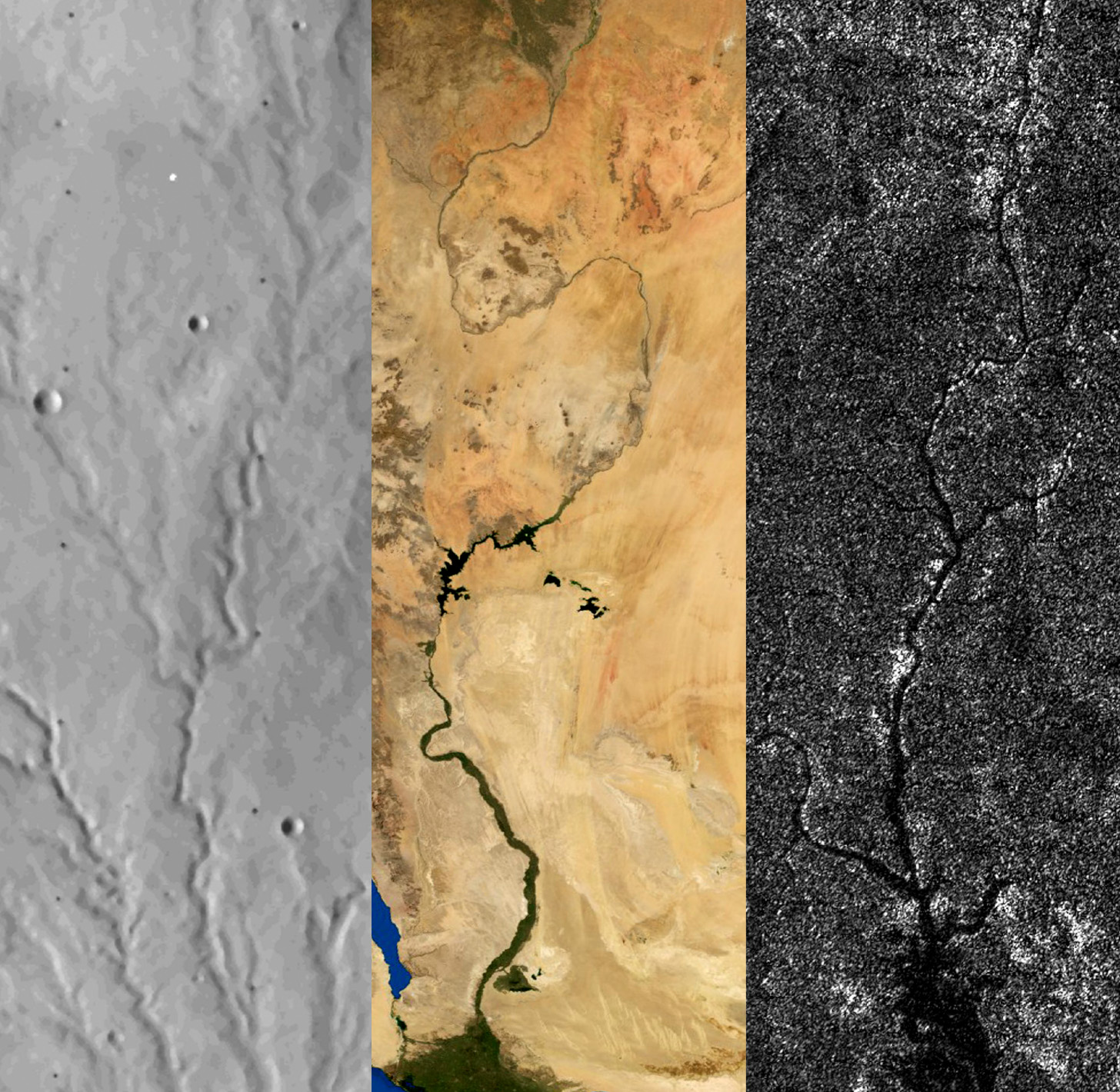
BENJAMIN BLACK/NASA/VISIBLE EARTH/JPL/CASSINI RADAR TEAM
Perron also sees a bigger picture. “Ken’s approach to understanding the behavior of individual sediment grains, and then developing ways to scale that up to entire landforms, is inspiring,” he says. “One colleague recently summarized [the collaboration] as a ‘gift that keeps on giving.’ We just keep discovering new aspects of granular dynamics in landscapes to explore together.”
Studying landscapes’ effects on biodiversity is another interdisciplinary area attracting graduate students and postdocs to Perron’s team. Instead of asking the usual questions about how species are lost, they look at why some landscapes retain or enhance biodiversity.
That biodiversity is under threat adds urgency to this research. “If you can understand what influences biodiversity and why some parts of Earth’s surface are much more diverse than others,” Perron says, “then hopefully we can do a better job of conserving it.”
Other collaborations help when traditional geomorphological research hits a dead end. “Landscapes that form through erosion are hard to trace through time, because the erosion destroys the evidence of what they looked like in the past,” he says.
Perron is intrigued by the work of Greg Fournier, an EAPS colleague who studies the genetic record of life on Earth. “Organisms that live in a landscape—and whose evolution depends on the landscape’s topography—might have preserved a more persistent record of a landscape’s past,” Perron says. Their DNA can serve as what he calls a molecular clock, giving geologists a new way to measure time.
“If you can take advantage of this genetic data, in addition to geological data, you have really expanded your arsenal … to figure out what happened to the landscape—and how those two things might have influenced each other,” says Perron.
Landscapes and life
Maya Stokes, PhD ’21, tackled one aspect of the biodiversity question at Perron’s urging. “When I was deciding on where to go for graduate school,” Stokes recalls, “I was looking for research that involved mountains and rivers. But when he suggested we throw fish into the mix, I couldn’t resist.”
Stokes’s dissertation examines how changes to river landscapes influence the evolution and distribution of aquatic organisms. Perron “pushed me to simultaneously consider big, generalizable scientific questions while also making sure I was focused on unraveling specific mechanisms and problems,” she says.
Now a postdoctoral fellow in ecology and evolutionary biology at Yale University, Stokes is using geomorphic research methods to collect and analyze DNA sequence data so she can piece together the intertwined histories of the fish and rivers of the Appalachian Mountains.
“Scientists have long suggested that Earth processes have fundamentally altered the evolution of life,” says Stokes, “but with the advent of next-generation DNA sequencing techniques and ever-improving methods for piecing together the physical history of landscapes, we are now poised to understand the exact mechanisms that govern such links.”
Perron plans to use his $625,000 MacArthur grant to collaborate with other researchers without having to wait for federal grant funding.
The award won’t alter his course, however. “I really do think that the answers to some of the big questions about Earth and the solar system are recorded in landscapes,” he says.
You may like
-


The Download: how to talk to kids about AI, and China’s emotional chatbots
-


You need to talk to your kid about AI. Here are 6 things you should say.
-


It’s time to talk about the real AI risks
-


Making Data Talk: How Marketers can Humanize their Campaigns through Zero- and First-Party Data
-


How to talk about AI (even if you don’t know much about AI)
-


The Download: how to talk about AI, and Montana’s TikTok ban
Tech
The hunter-gatherer groups at the heart of a microbiome gold rush
Published
5 months agoon
12/19/2023By
Drew Simpson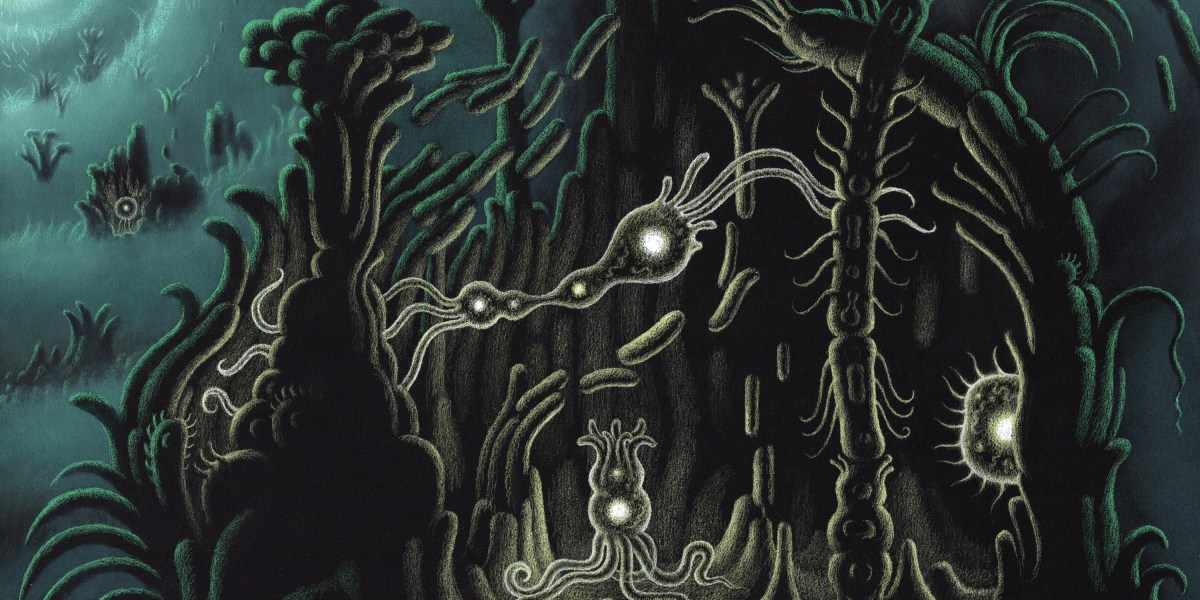
The first step to finding out is to catalogue what microbes we might have lost. To get as close to ancient microbiomes as possible, microbiologists have begun studying multiple Indigenous groups. Two have received the most attention: the Yanomami of the Amazon rainforest and the Hadza, in northern Tanzania.
Researchers have made some startling discoveries already. A study by Sonnenburg and his colleagues, published in July, found that the gut microbiomes of the Hadza appear to include bugs that aren’t seen elsewhere—around 20% of the microbe genomes identified had not been recorded in a global catalogue of over 200,000 such genomes. The researchers found 8.4 million protein families in the guts of the 167 Hadza people they studied. Over half of them had not previously been identified in the human gut.
Plenty of other studies published in the last decade or so have helped build a picture of how the diets and lifestyles of hunter-gatherer societies influence the microbiome, and scientists have speculated on what this means for those living in more industrialized societies. But these revelations have come at a price.
A changing way of life
The Hadza people hunt wild animals and forage for fruit and honey. “We still live the ancient way of life, with arrows and old knives,” says Mangola, who works with the Olanakwe Community Fund to support education and economic projects for the Hadza. Hunters seek out food in the bush, which might include baboons, vervet monkeys, guinea fowl, kudu, porcupines, or dik-dik. Gatherers collect fruits, vegetables, and honey.
Mangola, who has met with multiple scientists over the years and participated in many research projects, has witnessed firsthand the impact of such research on his community. Much of it has been positive. But not all researchers act thoughtfully and ethically, he says, and some have exploited or harmed the community.
One enduring problem, says Mangola, is that scientists have tended to come and study the Hadza without properly explaining their research or their results. They arrive from Europe or the US, accompanied by guides, and collect feces, blood, hair, and other biological samples. Often, the people giving up these samples don’t know what they will be used for, says Mangola. Scientists get their results and publish them without returning to share them. “You tell the world [what you’ve discovered]—why can’t you come back to Tanzania to tell the Hadza?” asks Mangola. “It would bring meaning and excitement to the community,” he says.
Some scientists have talked about the Hadza as if they were living fossils, says Alyssa Crittenden, a nutritional anthropologist and biologist at the University of Nevada in Las Vegas, who has been studying and working with the Hadza for the last two decades.
The Hadza have been described as being “locked in time,” she adds, but characterizations like that don’t reflect reality. She has made many trips to Tanzania and seen for herself how life has changed. Tourists flock to the region. Roads have been built. Charities have helped the Hadza secure land rights. Mangola went abroad for his education: he has a law degree and a master’s from the Indigenous Peoples Law and Policy program at the University of Arizona.
Tech
The Download: a microbiome gold rush, and Eric Schmidt’s election misinformation plan
Published
5 months agoon
12/18/2023By
Drew Simpson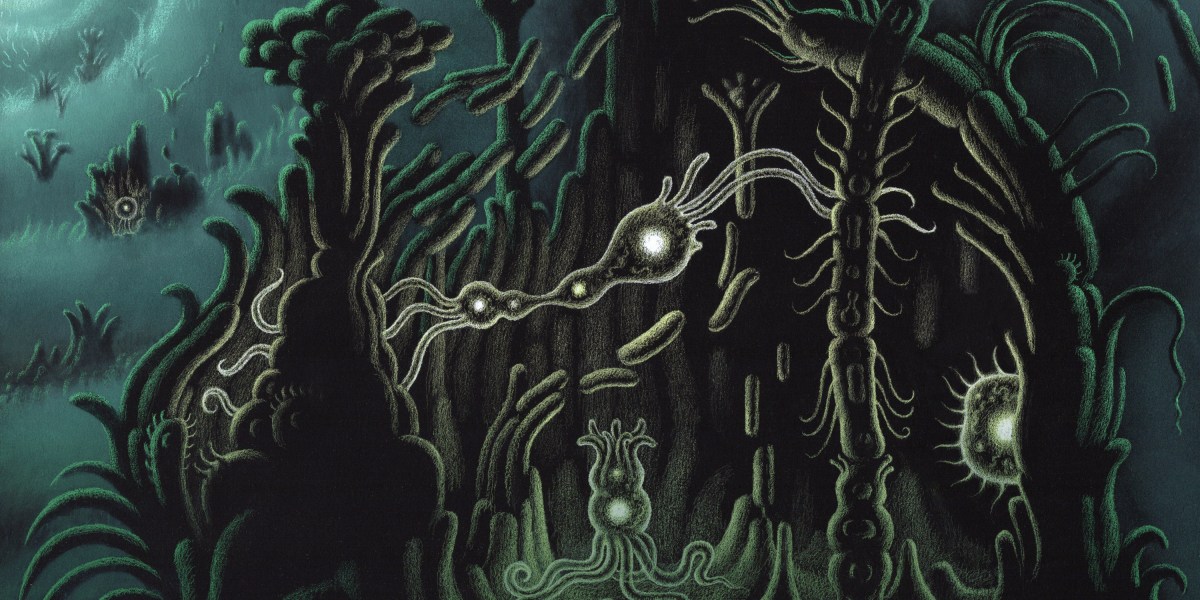
Over the last couple of decades, scientists have come to realize just how important the microbes that crawl all over us are to our health. But some believe our microbiomes are in crisis—casualties of an increasingly sanitized way of life. Disturbances in the collections of microbes we host have been associated with a whole host of diseases, ranging from arthritis to Alzheimer’s.
Some might not be completely gone, though. Scientists believe many might still be hiding inside the intestines of people who don’t live in the polluted, processed environment that most of the rest of us share. They’ve been studying the feces of people like the Yanomami, an Indigenous group in the Amazon, who appear to still have some of the microbes that other people have lost.
But there is a major catch: we don’t know whether those in hunter-gatherer societies really do have “healthier” microbiomes—and if they do, whether the benefits could be shared with others. At the same time, members of the communities being studied are concerned about the risk of what’s called biopiracy—taking natural resources from poorer countries for the benefit of wealthier ones. Read the full story.
—Jessica Hamzelou
Eric Schmidt has a 6-point plan for fighting election misinformation
—by Eric Schmidt, formerly the CEO of Google, and current cofounder of philanthropic initiative Schmidt Futures
The coming year will be one of seismic political shifts. Over 4 billion people will head to the polls in countries including the United States, Taiwan, India, and Indonesia, making 2024 the biggest election year in history.
Tech
Navigating a shifting customer-engagement landscape with generative AI
Published
5 months agoon
12/18/2023By
Drew Simpson
A strategic imperative
Generative AI’s ability to harness customer data in a highly sophisticated manner means enterprises are accelerating plans to invest in and leverage the technology’s capabilities. In a study titled “The Future of Enterprise Data & AI,” Corinium Intelligence and WNS Triange surveyed 100 global C-suite leaders and decision-makers specializing in AI, analytics, and data. Seventy-six percent of the respondents said that their organizations are already using or planning to use generative AI.
According to McKinsey, while generative AI will affect most business functions, “four of them will likely account for 75% of the total annual value it can deliver.” Among these are marketing and sales and customer operations. Yet, despite the technology’s benefits, many leaders are unsure about the right approach to take and mindful of the risks associated with large investments.
Mapping out a generative AI pathway
One of the first challenges organizations need to overcome is senior leadership alignment. “You need the necessary strategy; you need the ability to have the necessary buy-in of people,” says Ayer. “You need to make sure that you’ve got the right use case and business case for each one of them.” In other words, a clearly defined roadmap and precise business objectives are as crucial as understanding whether a process is amenable to the use of generative AI.
The implementation of a generative AI strategy can take time. According to Ayer, business leaders should maintain a realistic perspective on the duration required for formulating a strategy, conduct necessary training across various teams and functions, and identify the areas of value addition. And for any generative AI deployment to work seamlessly, the right data ecosystems must be in place.
Ayer cites WNS Triange’s collaboration with an insurer to create a claims process by leveraging generative AI. Thanks to the new technology, the insurer can immediately assess the severity of a vehicle’s damage from an accident and make a claims recommendation based on the unstructured data provided by the client. “Because this can be immediately assessed by a surveyor and they can reach a recommendation quickly, this instantly improves the insurer’s ability to satisfy their policyholders and reduce the claims processing time,” Ayer explains.
All that, however, would not be possible without data on past claims history, repair costs, transaction data, and other necessary data sets to extract clear value from generative AI analysis. “Be very clear about data sufficiency. Don’t jump into a program where eventually you realize you don’t have the necessary data,” Ayer says.
The benefits of third-party experience
Enterprises are increasingly aware that they must embrace generative AI, but knowing where to begin is another thing. “You start off wanting to make sure you don’t repeat mistakes other people have made,” says Ayer. An external provider can help organizations avoid those mistakes and leverage best practices and frameworks for testing and defining explainability and benchmarks for return on investment (ROI).
Using pre-built solutions by external partners can expedite time to market and increase a generative AI program’s value. These solutions can harness pre-built industry-specific generative AI platforms to accelerate deployment. “Generative AI programs can be extremely complicated,” Ayer points out. “There are a lot of infrastructure requirements, touch points with customers, and internal regulations. Organizations will also have to consider using pre-built solutions to accelerate speed to value. Third-party service providers bring the expertise of having an integrated approach to all these elements.”
